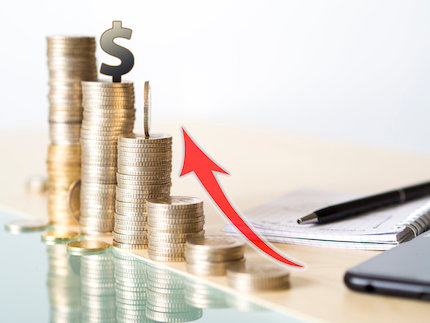It’s common knowledge on Wall Street that September has historically been a challenging month for stocks. In the 95 Septembers since 1928, the S&P 500 has closed down 52, more than in any other month, according to Yardeni Research.
If we narrow our focus to look at monthly returns over the past 30 years and five years, stocks have had the worst performance during September, dipping 0.34% and 2.89% on average, respectively.
September could be especially tricky this year when you consider that the bulk of stock market gains since last October are due to large gains in the prices of a handful of large-cap, tech-focused stocks.
These stocks are, of course, the so-called “Magnificent Seven”: Apple (AAPL), Microsoft (MSFT), Amazon (AMZN), NVIDIA (NVDA), Alphabet (GOOGL), Meta Platforms (META), and Tesla (TSLA). Year to date, through September 5, these seven stocks posted an average return of 102%. The S&P 500 was up 17.7%.
This narrow market is why our colleague, Tim Plaehn, recently wrote an article about why we may soon see a rotation out of the big tech stocks into value stocks.
Value stocks are shares of companies that are currently trading below what they are really worth, thus providing a superior return in the future. Value stock investors, including Warren Buffett, use fundamental analysis to determine a “fair value” for individual stocks. These stocks typically pay dividends with attractive yields.
However, value stock investing requires a lot of patience. Buffett once said his favorite holding period for a stock is “forever.”
Value investing works best when it seems that few on Wall Street are buying this type of stock.
That’s got me looking at one ETF in particular…

How We Got Here
Thanks to the Federal Reserve’s zero interest rate policy (ZIRP), the end of a 30+ year bull market in bonds, and one of the lengthiest bull markets in U.S. stock market history, we saw investors—desperate for yield—funnel billions of dollars into any investment that appeared to offer a decent dividend.
These investors were left picking over the markets, stretching valuations and depressing yields.
We saw a similar dynamic play out overseas. In 2014, several of Europe’s central banks cut interest rates below zero. ECB President Mario Draghi embarked on a government bond-buying plan worth about 1.1 trillion euros in March 2015. ECB later doubled that program.
The effect?
The same as here in the U.S. Desperate, yield-hungry investors faced what seemed to be an impossible task—find a high-yielding investment that did not come at a lofty valuation, or a reasonably-valued investment that offered more than an anemic yield.
This still-existing dilemma is what attracted me to one ETF in particular.
Cambria Global Value ETF
Per Cambria Investment Management: “Benjamin Graham and David Dodd are universally seen as the fathers of valuation and security analysis. In their 1934 book, Security Analysis, they were early pioneers in comparing stock prices with earnings smoothed across long timeframes, preferably five to 10 years.” Warren Buffett was actually a student of Graham’s during his time at Columbia University. Cambria further explains: “Robert Shiller popularized this method even further with his version of the cyclically adjusted price-to-earnings ratio (CAPE) in the late 1990s.”
The investment bank’s Cambria Global Value ETF (GVAL) is based on this method. It identifies the cheapest stock markets in the world using a composite of cyclically adjusted price ratios.
The ETF, Cambria explains, “begins with a universe of 45 countries, located in both developed and emerging markets.” It then selects “the top 25% cheapest country stock markets, as measured by Cambria’s proprietary long-term valuation metrics,” based on relative and absolute valuation.
Cambria then uses a valuation composite across traditional metrics such as trailing P/E, price/book (P/B), price/sales (P/S), price/free cash flow (P/FCF), and enterprise value/earnings before interest, taxes, depreciation, and amortization (EV/EBITDA) to select the 10 most undervalued stocks out of the top 30 largest stocks by market capitalization within each country.
GVAL is little changed in price in this year of the Magnificent Seven and AI, where value remains out of favor. It is up more than 6% over the past year.
The fund does pay a quarterly dividend. Its current distribution yield is 5.34%, and its 30-day SEC yield is just under 4%.
If Tim is right—and I think he is—value stocks will regain favor quickly, boosting the price of this fund. GVAL can be bought anywhere under $20 a share.





